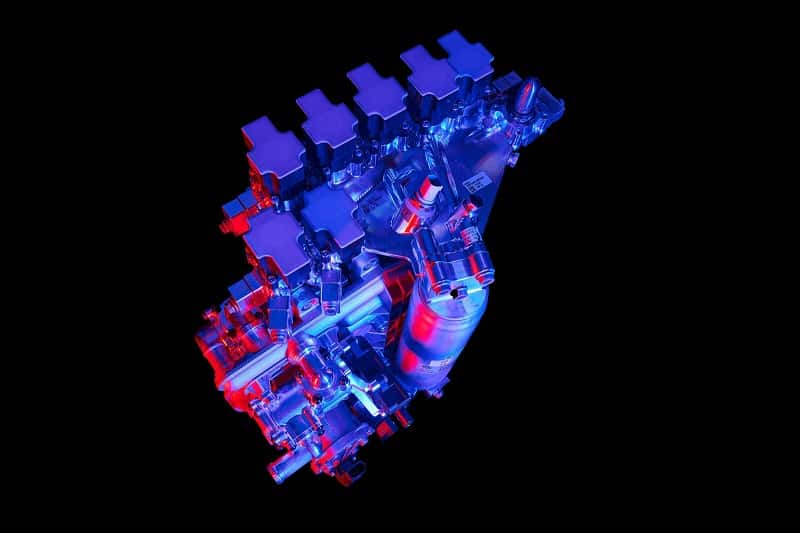FDCA PEF – Cell-to-pack battery 24-02-2023 - Arhive
FDCA PEF – Cell-to-pack battery
Crude Oil Prices Trend
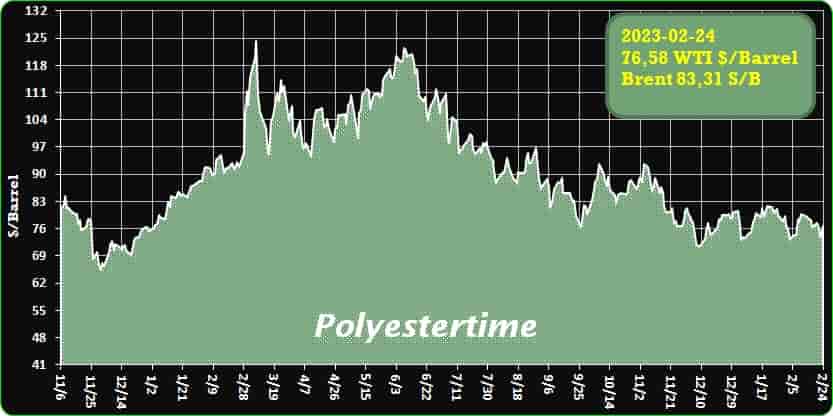
Crude Oil Prices Trend
-VO+ PE Cavitation Masterbatch for flexible packaging is pre-qualified by How2Recycle®
VOID Technologies, a materials science company, has developed a patented masterbatch technology for cavitating PE film, which has received pre-qualification from How2Recycle as Store Drop-off recyclable in the US and widely recyclable in Canada (curbside).
How2Recycle, well known for its standardised labelling system, has pre-qualified VOID’s VO+ PE Masterbatch technology, in the form of a VO+ LLDPE example film submitted for evaluation.
As a result, film and packaging manufacturers in North America can use the ‘VO+ PE Masterbatch’ to help brands achieve their plastics and packaging reduction targets through low density cavitated PE films. FDCA PEF – Cell-to-pack battery
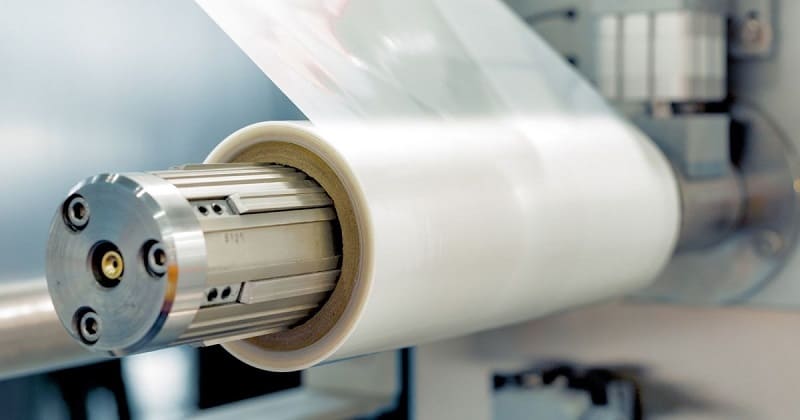
-Avantium and Origin Materials to Accelerate the Mass Production of FDCA and PEF for Advanced Chemicals and Plastics
Avantium N.V. (“Avantium”), a leading technology company in renewable chemistry, and Origin Materials, Inc. (“Origin” and “Origin Materials”), a leading sustainable materials company based in the USA, today announced a partnership to accelerate the mass production of FDCA and PEF for use in advanced chemicals and plastics.
The partnership aims to bring the technology platforms of both companies together in order to produce FDCA from sustainable wood residues on an industrial scale.
FDCA (furandicarboxylic acid) is the key building block for the biopolymer PEF (polyethylene furanoate) – a 100% plant-based, fully recyclable plastic material, with superior functionality and a significantly reduced carbon footprint compared to conventional plastics.FDCA PEF – Cell-to-pack battery
PEF can be used in a wide range of applications such as bottles, packaging, films, fibers and textiles, which represent major end-markets.
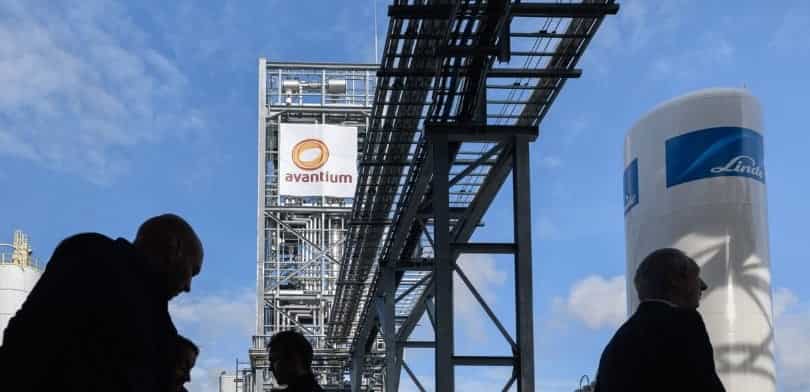
-Adaptive system pressure reduction makes injection moulding machines more energy efficient
A new option is now available for hybrid injection moulding machines from Netstal: Adaptive system pressure reduction permanently determines the optimum operating pressure in the hydraulic system. The retrofittable feature lowers power consumption while maintaining at least the same productivity, reduces the CO2 footprint and pays for itself in a short time.
In order to handle peak loads without any problems, the hydraulic system of hybrid Netstal injection moulding machines is designed for a maximum operating pressure of 250 bar. Depending on the application, a lower value would also be sufficient. “This is where we come in with the new system pressure reduction and make our machines even more energy efficient. FDCA PEF – Cell-to-pack battery
In automatic mode, the adaptive control system determines the optimum point at any time and adjusts the system pressure accordingly. With the same or even increased productivity, the energy consumption for providing the system pressure is reduced to a minimum,” explains Daniel Wipfli, Product Manager at Netstal. A lower load on the components can also have a positive effect on machine availability, maintenance intervals can be planned more efficiently, and the machine produces for longer time.
Smaller carbon footprint and higher cash flow
In addition, there are further ecological and economic advantages for Netstal customers. The lower energy consumption of the machine also reduces the user’s ecological footprint. Depending on the regional electricity mix, less CO2 is emitted. In most cases, the small surcharge for adaptive system pressure reduction pays for itself within a few months.
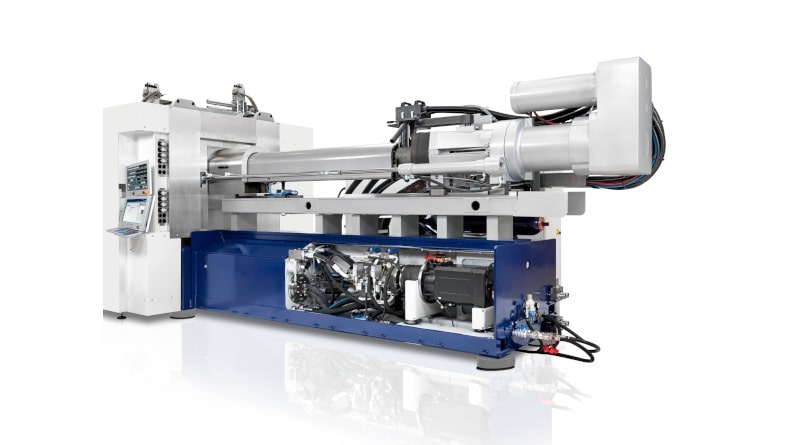
-Comerio Ercole Launches BICOPET with STP Impianti
New plant will be presented during INDEX23
Comerio Ercole, a well-known Italian company founded in 1885 and manufacturer of industrial machines and plants for its department dedicated to the design and manufacture of high-performance calenders for the nonwovens industry, in cooperation with STP Impianti, an Italian company founded in 1985 and a manufacturer of complete spunmelt plants, presents a recent technological combination aimed at the continuous production of spun PET and/or bico PET products.FDCA PEF – Cell-to-pack battery
The STP Impianti spunmelt spinning plant BICOPET is equipped with the innovative and patented 3-roll Duetto calender, preceded by the innovative high-speed thermosetting unit Thermofix, both new Comerio Ercole technologies for energy saving optimization.
The new configuration of the BICOPET plant and in particular the 3-roll Duetto calender will be presented during the INDEX23 exhibition in Geneva, April 18-21 (stand no. 1122).
Riccardo Comerio, CEO of Comerio Ercole, is proud of this new recent and innovative realization in the nonwovens field for industrial use. Roberto Marcora, nonwovens area manager, underlines how the results obtained are the success of extensive experimentation carried out in the company laboratories and awaits all interested parties at INDEX23 to present the successful Comerio Ercole production and engineering platform and the new 3-roll Duetto calender.
The main target of BICOPET plants involves the production of thermobonded PET spunmelt and flat bonded bico PET spunmelt. FDCA PEF – Cell-to-pack battery
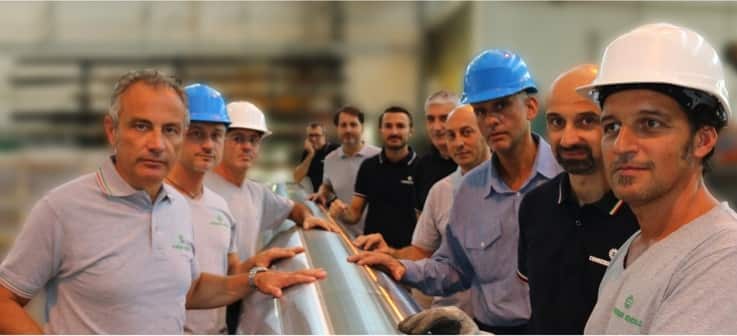
-The cell to pack battery market is projected to grow from USD 5.5 billion in 2023 to USD 29.3 billion by 2030 at a CAGR of 26.9%
The growth of this market is mainly driven by the increasing demand for high-voltage batteries to achieve a longer drive range. CTP battery is one of the results of such advancement, which eliminates the usage of modules and directly integrates cells into battery packs.FDCA PEF – Cell-to-pack battery
Reportlinker.com announces the release of the report “Cell to Pack Battery Market by Form, Battery Type, Propulsion, Technology, Vehicle Type and Region – Global Forecast to 2030” – https://www.reportlinker.com/p06422852/?utm_source=GNW
This allows the use of larger and more cells within battery packs with reduced interconnections and a simplified assembly process resulting in an increased volumetric density of batteries and reduced cost. CTP technology is yet to be commercially launched in most EV-dominating countries. It is expected to gain traction by 2024?2025 in the US, South Korea, Japan, and European countries.
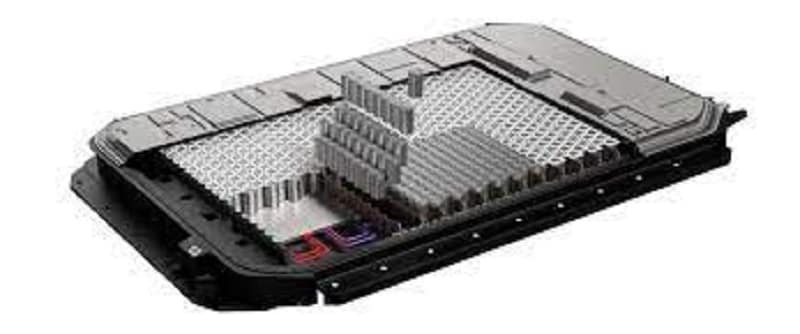
-Extrusion line for PET recycling for KTDI
Founded over 30 years ago to provide central research and development for fiber manufacturers, the KTDI is located in the center of Korea’s fiber manufacturing region. It has a large technical center which is open to the public and for general use, which is especially attractive to small and medium enterprises (SMEs) as they can run trials on the equipment at the KTDI technical center.FDCA PEF – Cell-to-pack battery
With the increasing emphasis on sustainability, fiber manufacturers are looking for ways of using recycled material for making fibers, whether it be recycling post-consumer PET bottle flake to high quality yarn, or recycling PET fiber waste from fiber production. For use in its technical center, the Korea Textile Development Institute (KTDI), Daegu/Korea, decided to buy a Gneuss MRS 70 Extruder, with dosing feeders, vacuum system, automatic Melt Filtration System and Online Viscometer for processing PET waste to pellets, with fiber spinning in mind.

-Volkswagen Group Technology develops complete drive system for electric cars
- In addition to the battery and electric motor, in future the technology powerhouse of the Group will also develop pulse inverters and thermal management systems
- The development of a complete drive offers efficiency and cost advantages, up to 20 percent more efficiency through the optimal combination of individual components
- Group Technology bundles Group-wide activities in the areas of batteries, charging and electronic components FDCA PEF – Cell-to-pack battery
- Thomas Schmall: “Our goal is to achieve technological leadership, also in electric mobility. That’s why here, too, we rely on our internal competencies.”
At Tech Day 2023, Volkswagen Group Technology provided an outlook of upcoming electric car innovations in the areas of batteries, charging and electronic components. The focus was on the electric drive system of the future. For this purpose, Volkswagen is taking care of all the central components itself and, in addition to batteries and electric motors, is now developing pulse inverters and thermal management systems internally. The Volkswagen drive system coming from one source offers significant efficiency and cost advantages: Up to 20 percent more efficiency is possible through the optimal combination of individual components alone. FDCA PEF – Cell-to-pack battery
